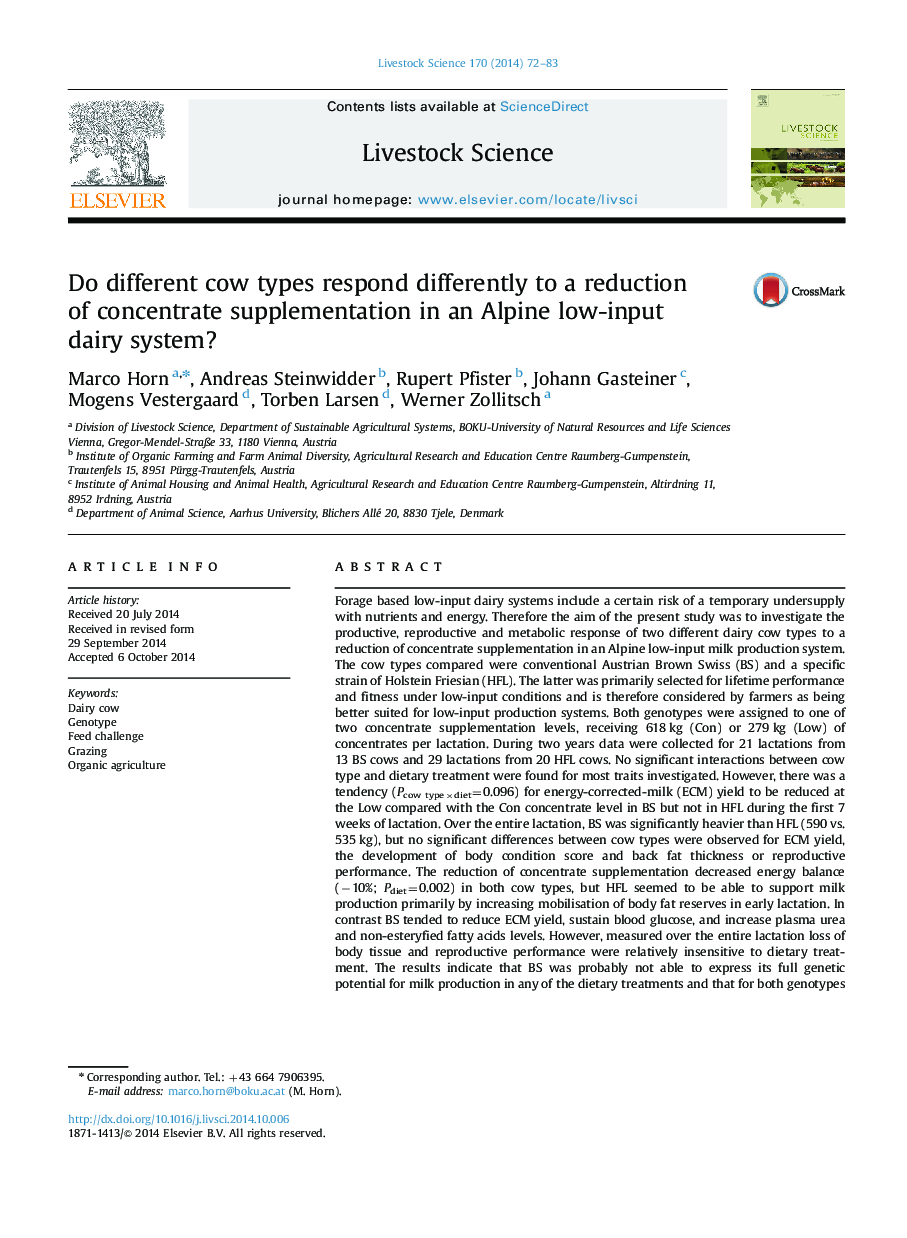| کد مقاله | کد نشریه | سال انتشار | مقاله انگلیسی | نسخه تمام متن |
|---|---|---|---|---|
| 2447167 | 1553962 | 2014 | 12 صفحه PDF | دانلود رایگان |
• The response of two cow types to a reduction of concentrate feeding was studied.
• Lactation milk yield of both cow types declined when nutritionally challenged.
• Challenged cows increased body tissue mobilisation in early lactation.
• Reproductive performance was excellent and insensitive to supplementation level.
• Plasma metabolites indicate a cow type specific adaption pattern.
Forage based low-input dairy systems include a certain risk of a temporary undersupply with nutrients and energy. Therefore the aim of the present study was to investigate the productive, reproductive and metabolic response of two different dairy cow types to a reduction of concentrate supplementation in an Alpine low-input milk production system. The cow types compared were conventional Austrian Brown Swiss (BS) and a specific strain of Holstein Friesian (HFL). The latter was primarily selected for lifetime performance and fitness under low-input conditions and is therefore considered by farmers as being better suited for low-input production systems. Both genotypes were assigned to one of two concentrate supplementation levels, receiving 618 kg (Con) or 279 kg (Low) of concentrates per lactation. During two years data were collected for 21 lactations from 13 BS cows and 29 lactations from 20 HFL cows. No significant interactions between cow type and dietary treatment were found for most traits investigated. However, there was a tendency (Pcow type×diet=0.096) for energy-corrected-milk (ECM) yield to be reduced at the Low compared with the Con concentrate level in BS but not in HFL during the first 7 weeks of lactation. Over the entire lactation, BS was significantly heavier than HFL (590 vs. 535 kg), but no significant differences between cow types were observed for ECM yield, the development of body condition score and back fat thickness or reproductive performance. The reduction of concentrate supplementation decreased energy balance (−10%; Pdiet=0.002) in both cow types, but HFL seemed to be able to support milk production primarily by increasing mobilisation of body fat reserves in early lactation. In contrast BS tended to reduce ECM yield, sustain blood glucose, and increase plasma urea and non-esteryfied fatty acids levels. However, measured over the entire lactation loss of body tissue and reproductive performance were relatively insensitive to dietary treatment. The results indicate that BS was probably not able to express its full genetic potential for milk production in any of the dietary treatments and that for both genotypes the nutritional challenge did not exceed the range of metabolic adaptions although the adaptation pattern was somewhat cow type specific.
Journal: Livestock Science - Volume 170, December 2014, Pages 72–83
